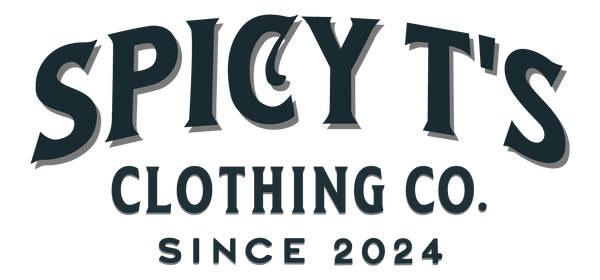
Most Common Logo Design Mistakes (And How to Avoid Them)
Share
A great logo is timeless, versatile, and memorable — but a bad one? It can ruin a brand's first impression faster than you can say "revamp."
Whether you're designing logos for your own business, selling custom vectors, or offering merch-ready t-shirt logos, avoiding these common logo design mistakes will save you time, money, and missed opportunities.
Let’s break them down 👇
1. 🚫 Designing Without a Clear Brand Strategy
Mistake: Jumping straight into design without understanding the business, audience, or purpose.
Why it’s bad: A logo without context is just decoration. It won’t connect with the target audience.
Solution:
-
Ask branding questions first: “Who are you?” “Who do you serve?” “What feeling should your logo evoke?”
-
Use mood boards, buyer personas, and inspiration galleries to guide direction.
2. 🎨 Using Too Many Colors
Mistake: Overloading the logo with 4+ colors or wild gradients.
Why it’s bad: Complex color schemes don’t scale well and can look unprofessional.
Solution:
-
Stick to 2–3 max brand colors
-
Test in black and white to check versatility
-
Use color psychology to guide choices (e.g., blue = trust, red = passion)
3. 🌀 Overcomplicating the Design
Mistake: Adding too many elements, icons, or text effects.
Why it’s bad: Logos need to be recognizable even at small sizes. A busy design fails this test.
Solution:
-
Aim for simplicity
-
Try the “1-second rule”: If someone can’t understand it in 1 second, simplify it
-
Use vector line art or clean silhouettes
4. 🧱 Ignoring Scalability
Mistake: Designing only for large formats (e.g., billboards), forgetting that logos must also fit in favicons, social media, or tags.
Why it’s bad: Poor scalability = bad branding everywhere else.
Solution:
-
Design in vector format (AI, SVG)
-
Test your logo at 32x32 px (favicon) and 4000x4000 px (print)
-
Avoid tiny text or thin lines
5. 🔠 Picking the Wrong Font
Mistake: Using trendy or hard-to-read fonts (Comic Sans, Papyrus 😬).
Why it’s bad: Bad typography kills professionalism and brand perception.
Solution:
-
Choose clean, legible fonts
-
Limit to 1–2 fonts
-
Make sure the font style matches the brand tone (e.g., modern sans-serif for tech; elegant serif for luxury)
6. 🚷 Copying or Using Clipart
Mistake: Grabbing icons from free libraries or copying other logos.
Why it’s bad: You risk copyright issues and your brand looks generic.
Solution:
-
Create original designs or use editable vector packs (customize them fully)
-
Use inspiration — not imitation
-
Run logo through reverse image search to ensure originality
7. 💥 Relying on Special Effects
Mistake: Making the logo look good only with 3D, bevels, drop shadows, or textures.
Why it’s bad: Special effects don’t always print well and can feel outdated.
Solution:
-
Focus on a strong flat version first
-
Add effects later for specific use cases (YouTube banners, etc.)
8. 🧩 Not Having Logo Variations
Mistake: Delivering just one version of the logo.
Why it’s bad: It won’t work on every background or in every format.
Solution:
Provide:
-
Full color version
-
Black & white
-
Transparent background
-
Icon-only and wordmark-only versions
9. 📐 Poor Alignment & Spacing
Mistake: Uneven margins, misaligned text, or crooked icons.
Why it’s bad: It looks unprofessional and visually off-balance.
Solution:
-
Use design grids and smart guides
-
Zoom in to 500% to check spacing
-
Apply the golden ratio or rule of thirds to balance elements
10. 📉 Following Trends Too Closely
Mistake: Chasing trends like glitch effects, holographic gradients, or overly minimal lines.
Why it’s bad: Trends fade. You’ll have to redesign sooner than expected.
Solution:
-
Stick with timeless design principles
-
Add personality with custom touches, not trend gimmicks
-
Blend modern appeal with long-term clarity
💬 Final Thoughts
Great logos aren’t just "cool" — they’re strategic. Whether you’re building a brand, selling shirt-ready vector designs, or offering logo services on your store, always remember:
A good logo is clear, scalable, versatile, and emotionally connected to the audience.
Avoiding these mistakes can elevate your brand and position your design business as pro-level in a sea of quick, template-based services.
